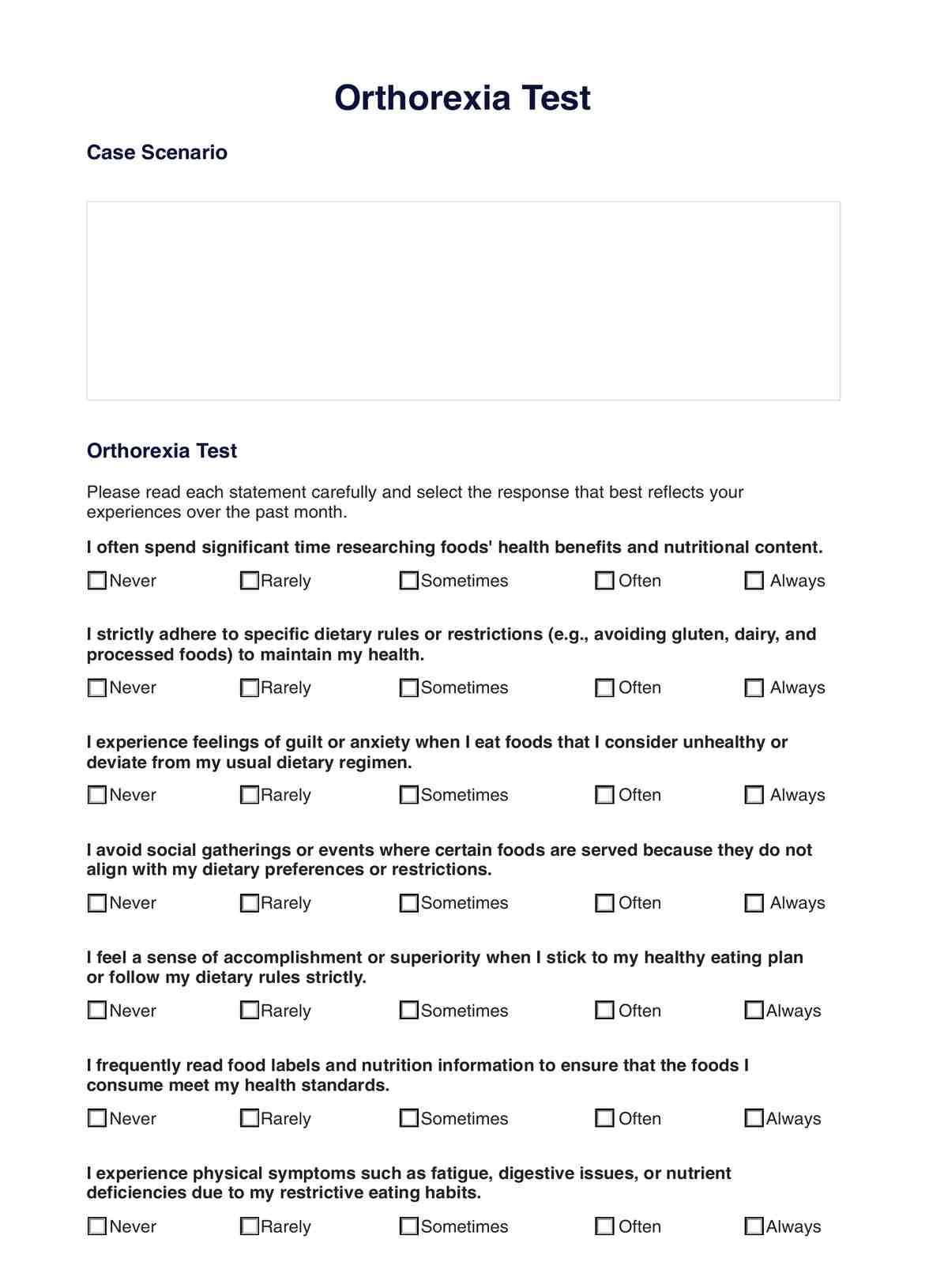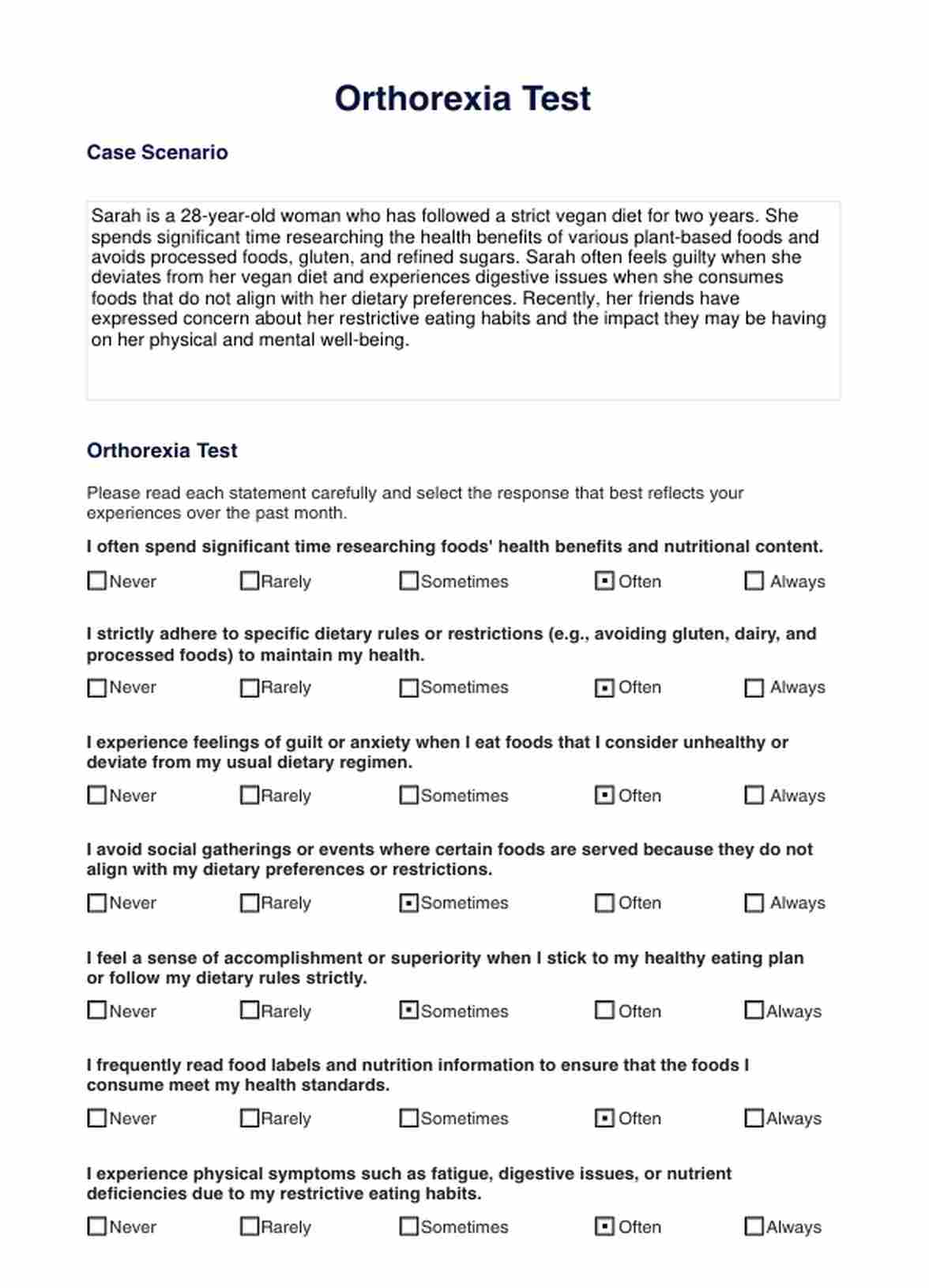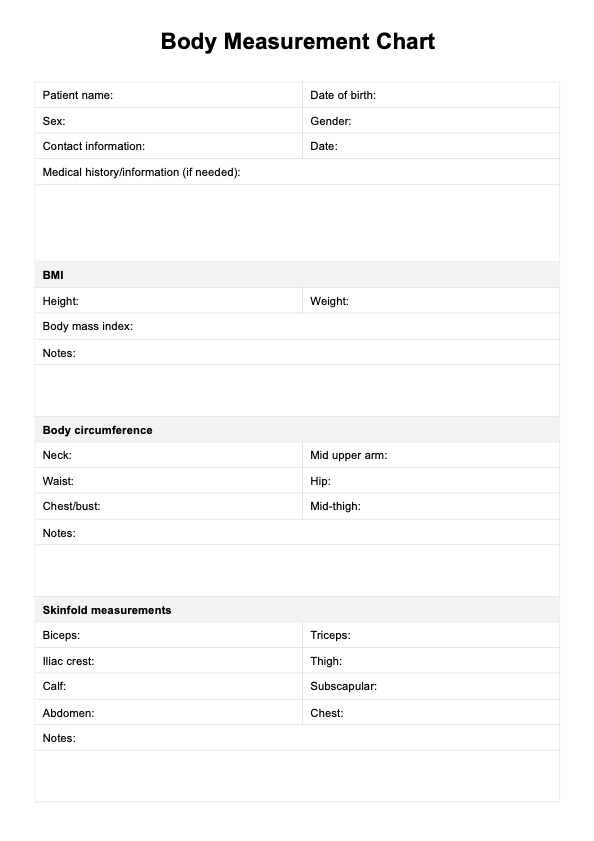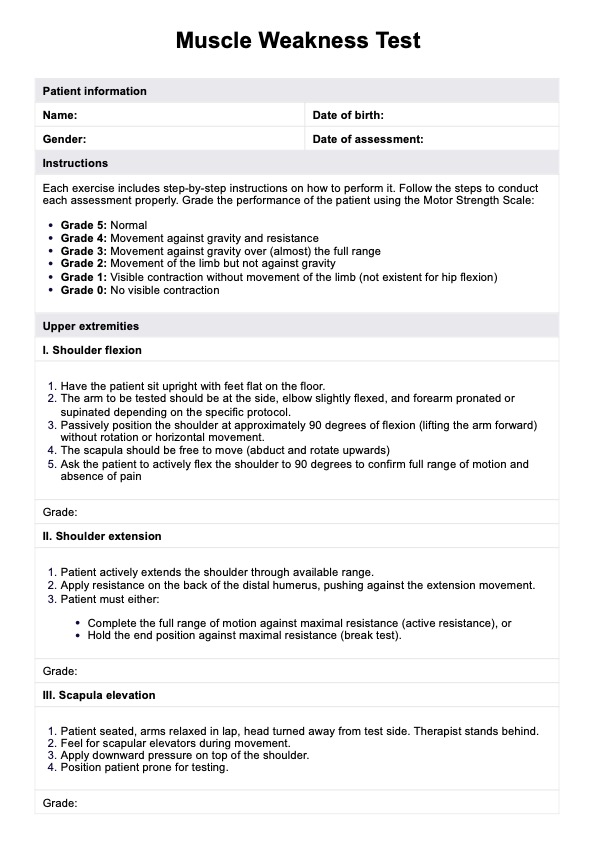Orthorexia Test
Assess your relationship with food and well-being with our Orthorexia Test. Download the template now for a balanced approach to nutrition.


What is orthorexia nervosa?
Orthorexia nervosa is a term used to describe an obsession with eating foods that one considers healthy. The term was coined by Dr. Steven Bratman in 1997 and is derived from the Greek words orthos, meaning "correct" or "right," and orexis, indicating "appetite" or "desire."
Individuals with orthorexia nervosa become fixated on consuming foods that they perceive to be pure, clean, or natural and avoid foods, often to the point where it negatively impacts their physical and mental well-being.
While a focus on healthy, intuitive eating is generally considered positive, orthorexia nervosa involves an extreme preoccupation with food quality and purity to the detriment of other aspects of life. This obsession can lead to anxiety, social isolation, nutritional deficiencies, and even physical harm if it results in the exclusion of entire food groups or inadequate calorie intake.
It's important to note that orthorexia nervosa is not currently recognized as a distinct eating disorder in the Diagnostic and Statistical Manual of Mental Disorders (DSM-5), which mental health professionals use for diagnosis. However, it is increasingly being recognized and studied as a problematic pattern of behavior related to food and eating habits.
Orthorexia Test Template
Orthorexia Test Example
What is an Orthorexia Test?
An Orthorexia Test is a screening tool designed to assess an individual's tendencies towards orthorexia nervosa, an eating disorder characterized by an unhealthy obsession with consuming only foods perceived as healthy.
This test evaluates various aspects of a person's relationship with food, including their attitudes toward healthy eating, eating habits, food rules, and restricting foods. It may also examine behaviors such as eliminating certain foods or entire food groups, rigid adherence to nutritional labels, and restrictive dieting practices.
The test may inquire about specific behaviors associated with orthorexia nervosa, such as avoiding social events or gatherings where certain foods are present, feeling guilty or anxious when deviating from a healthy eating regimen, and spending excessive time planning, preparing, or thinking about meals.
Additionally, an orthorexia quiz might assess other factors that can contribute to disordered eating patterns, such as a history of different eating disorders like anorexia nervosa or binge eating disorder, as well as comorbid conditions like obsessive-compulsive disorder or anxiety.
Questions in an orthorexia test may cover various topics related to food choices to eat healthily, including attitudes towards gluten, animal products, sugar, and specific dietary preferences like veganism. It may also explore the individual's motivations for eating healthily, their perceptions of nutritional value, and the impact of their dietary habits on their physical and mental health, self-esteem, and social relationships.
The Bratman Orthorexia Test is one commonly used assessment tool, which asks individuals to rate the frequency of various behaviors and attitudes related to orthorexia nervosa. While taking such a test, individuals should be in a safe space and encouraged to answer honestly to measure their orthorexic tendencies accurately.
It's important to note that while prioritizing healthy eating is generally favorable when taken to extremes, it can lead to orthorexia nervosa, which can have detrimental effects on both physical and mental health. Therefore, recognizing and addressing problematic eating behaviors is essential for maintaining a balanced and healthy relationship with food.
How does an Orthorexia Test work?
An Orthorexia Test is a questionnaire or quiz designed to assess an individual's attitudes, behaviors, and beliefs regarding healthy eating and their relationship with eating healthy food only. The test aims to identify signs of orthorexia nervosa, an eating disorder characterized by an unhealthy fixation on consuming foods perceived as pure, clean, or natural. Here's how an Orthorexia Test generally works:
- Questionnaire format: The test is usually presented as a series of questions related to various aspects of the individual's eating habits, attitudes toward food, and behaviors associated with orthorexia nervosa.
- Behavioral patterns: The questions may cover a wide range of topics, including dietary restrictions, food rules, avoidance of certain foods or food groups, preoccupation with healthy eating, feelings of guilt or anxiety related to food choices, and the impact of dietary habits on social interactions and daily life.
- Scoring system: Each question typically has response options ranging from "never" or "rarely" to "often" or "always." Participants are asked to select the option that best reflects their experiences or behaviors.
- Quantifying responses: After completing the questionnaire, responses are scored to quantify the individual's tendencies towards orthorexia nervosa. This scoring system may vary depending on the specific test being used.
- Interpretation: Based on the individual's scores, the test can provide insight into the severity of orthorexic tendencies and whether further evaluation or intervention may be warranted.
- Self-reflection: Taking the test can also prompt individuals to reflect on their eating habits, attitudes, and behaviors, raising awareness of potentially problematic patterns and encouraging self-reflection.
- Professional guidance: While an Orthorexia Test can be a valuable tool for self-assessment, it's essential to interpret the results in conjunction with professional advice from a healthcare provider or mental health professional. They can provide personalized support and recommendations based on the individual's unique circumstances and needs.
Why take an Orthorexia Test?
Taking an Orthorexia Test can be beneficial for several reasons:
- Self-awareness: It can help individuals become more aware of their attitudes, behaviors, and beliefs regarding healthy eating. Completing the test prompts self-reflection and can highlight any potentially problematic patterns or obsessions with food purity.
- Early detection: Recognizing signs of orthorexia nervosa early on allows individuals to address unhealthy eating habits before they escalate into more severe issues. The test can serve as an early detection tool, enabling individuals to seek support and intervention.
- Guidance: The results of an Orthorexia Test can provide valuable insights into an individual's relationship with food and help guide them toward healthier eating habits. Understanding one's tendencies towards orthorexia can prompt individuals to seek professional guidance and support from healthcare providers or mental health professionals.
- Prevention: For individuals at risk of developing orthorexic tendencies, taking the test can serve as a preventive measure. By identifying potential warning signs early, individuals can take proactive steps to maintain a balanced approach to nutrition and avoid the negative consequences associated with orthorexia nervosa.
- Validation: Some individuals may struggle with feelings of guilt or anxiety about their eating habits but may not recognize the severity of their concerns. Completing an Orthorexia Test can validate their experiences and reassure them that their concerns are valid, encouraging them to seek help and support.
- Education: Taking an Orthorexia Test can educate individuals about the signs and symptoms of orthorexia nervosa, as well as the potential risks associated with obsessive fixation on healthy eating. This increased awareness can empower individuals to make informed decisions about their diet and overall well-being.
Orthorexia Test types
There are several types of Orthorexia Tests available, each with its approach to assessing an individual's tendencies towards orthorexia nervosa and unhealthy fixation on healthy eating. Some common types include:
- Questionnaire-based tests: These tests typically involve questions related to eating habits, attitudes towards food, and behaviors associated with orthorexia nervosa. Participants respond to each question based on the frequency or severity of their experiences, and their responses are scored to quantify their tendencies toward orthorexic behaviors.
- Online assessments: Numerous online evaluations and quizzes aim to measure orthorexic tendencies. These assessments may be self-administered and provide instant feedback on an individual's scores and potential risk factors for orthorexia nervosa.
- Diagnostic tools: Some mental health professionals may use diagnostic tools or structured interviews to assess orthorexia nervosa as part of a comprehensive evaluation for eating disorders. These tools may include standardized measures and criteria outlined in diagnostic manuals such as the DSM-5.
- Bratman orthorexia test: Developed by Dr. Steven Bratman, this self-administered questionnaire is one of the most well-known assessments for orthorexic tendencies. It includes questions about food rules, attitudes toward healthy eating, and behaviors related to an obsessive fixation on food purity.
- Clinical screening tools: Mental health professionals may use clinical screening tools or inventories to assess orthorexic tendencies during clinical assessments. These tools may include specific items or scales designed to measure aspects of orthorexia nervosa, such as preoccupation with healthy eating and dietary restrictions.
- Modified eating disorder assessments: Some standardized assessments for eating disorders, such as the Eating Disorder Examination Questionnaire (EDE-Q), may include items related to orthorexic tendencies as part of their assessment of disordered eating behaviors.
- Research instruments: Researchers may develop specialized instruments or scales to measure orthorexic tendencies in specific populations or research studies. These instruments may undergo validation to ensure their reliability and validity when assessing orthorexia nervosa.
What signs and symptoms might prompt someone to take an Orthorexia Test?
Several signs and symptoms may prompt someone to consider taking an Orthorexia Test to assess their tendencies towards orthorexia nervosa or unhealthy fixation on healthy eating. These signs and symptoms may include:
Behavioral
Behavioral signs encompass individuals' actions and behaviors regarding their dietary habits. These signs often involve strict adherence to diet culture and self-imposed "healthy" eating rules, leading to an obsessive and inflexible approach to food choices.
- Obsessive focus on healthy eating: Individuals may find themselves constantly preoccupied with the healthfulness of their food choices, spending excessive time researching, planning, and preparing meals to ensure they meet strict criteria for "clean" or "pure" eating.
- Rigid food rules and restrictions: They may follow strict dietary laws and regulations, such as eliminating entire food groups (e.g., carbohydrates, fats) or avoiding specific ingredients (e.g., gluten, dairy) based on perceived health benefits or risks.
- Avoidance of enjoyment in eating: They may view food primarily as a source of nutrition rather than pleasure, leading to diminished enjoyment and reduced flexibility in food choices.
Emotional and mental health
Emotional and mental health signs reflect the psychological impact of orthorexic tendencies on individuals. These signs encompass feelings of guilt, anxiety, or distress related to food choices, as well as adverse effects on body image and overall mental well-being. The desire for control through strict dietary regulation may also be indicative of underlying emotional issues.
- Feelings of guilt or anxiety: They may experience feelings of guilt, anxiety, or distress when unable to adhere to their self-imposed dietary rules or when faced with situations where "healthy" eating is challenging, such as social gatherings or restaurants.
- Negative impact on mental health: Their fixation on healthy eating may contribute to increased anxiety, depression, or obsessive-compulsive tendencies related to food and body image.
- Distorted body image: They may have a distorted perception of their body and its relationship with food, striving for an unattainable ideal of health and wellness through dietary control.
- Desire for control: They may use their strict dietary regimen to exert control over other aspects of their life or cope with stress, leading to an unhealthy relationship with food and eating.
Social
Social signs pertain to the impact of orthorexic behaviors on individuals' relationships and interactions with others. Social isolation may occur as individuals prioritize their strict dietary regimen and weight loss over social engagements. Concerns raised by friends, family, or healthcare professionals highlight external observations of potentially problematic eating habits.
- Social isolation: Their obsession with healthy eating may lead to social withdrawal or avoidance of social events where certain foods are present, impacting their relationships and social interactions.
- Concerns raised by others: Friends, family members, or healthcare professionals may express concern about the individual's eating habits, noticing signs of excessive focus on healthy eating or restrictive behaviors.
Physical Health
Physical health signs involve the tangible effects of orthorexic behaviors on individuals' bodily well-being. Despite the intention to prioritize health through dietary choices, individuals may experience adverse physical effects such as fatigue, nutrient deficiencies, or digestive issues due to restrictive eating habits.
Suppose someone recognizes several of these signs and symptoms in themselves or a loved one. In that case, consider taking an Orthorexia Test or seeking guidance from a healthcare provider or mental health professional for further evaluation and support.
Commonly asked questions
The Bratman Orthorexia Test is a 10-question test developed by Bratman to assess orthorexic tendencies. Questions focus on aspects like preoccupation with restrictive diet, meal planning, and the impact of dietary restrictions on quality of life.
The Orthorexia Test is designed to indicate whether an individual may be at risk of developing orthorexia by assessing common symptoms related to obsessive and restrictive eating behaviors.
Common signs of orthorexia include fixating on the quality or "cleanliness" of food, having rigid eating habits, and experiencing a decline in social or other life decreased academic functioning due to dietary beliefs.















































































































